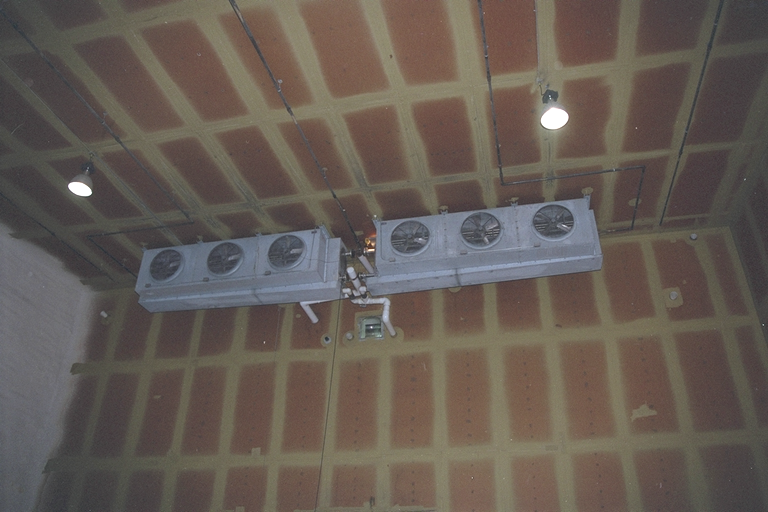Aluminum Tube Corrosion
 Figure 1. Evaporator coils. Figure 1. Evaporator coils.
Figure 2. Cross section of aluminum tube wall showing pitting corrosion. |
Aluminum evaporator coils for an ammonia refrigeration system at a cold storage facility suffered a significant leak, destroying the entire contents of one of the storage rooms. The coils are pictured in the room in Figure 1. The system had been in service for ten years. A pinhole leak was first discovered in an evaporator tube U-bend. The leak was repaired, and the system placed back into service, but a second leak was found a short time later near the location of the first leak.
A visual examination of the evaporator coils revealed the location of the second leak. Two sections were cut from the tubing: one with the leak, and for comparison, one nearby with no leak.
The aluminum tubing is one-inch diameter with a 0.06-inch-thick wall. After splitting the tubing open, visual examination of the area of the leak showed signs of significant interior pitting as seen in Figure 2. The sample removed from nearby however exhibited very little pitting. The pitting was isolated to a level line suggesting that the damage was related to certain flow conditions of the refrigerant within the tubing.
Chemical analysis of the corrosion product remaining in the pits revealed the presence of elemental chlorine. Chlorides are well known to cause pitting corrosion of aluminum. The source of the chlorides was never found but entered the system through either contaminated refrigerant or compressor oil.

